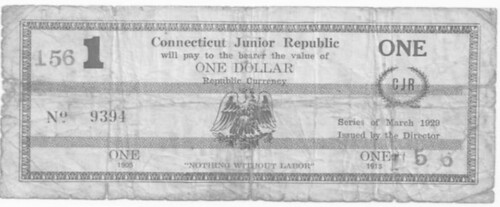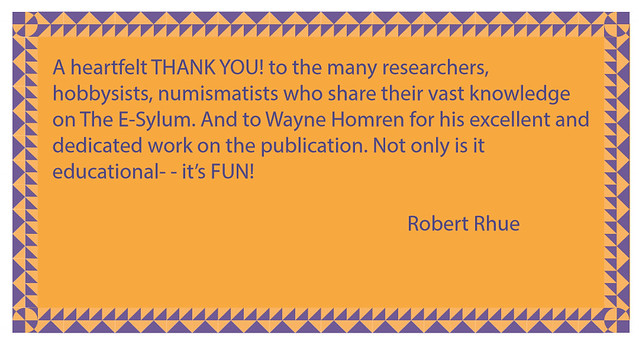
PREV ARTICLE
NEXT ARTICLE
FULL ISSUE
PREV FULL ISSUE
THE GEORGE JUNIOR REPUBLICThe New England Numismatic Association's official publication is NENA News. John Ferreri offered to share some articles with E-Sylum readers; thanks! Here's a token article that caught my eye - it's from the June 2021 issue. Written by Bob Hewey, it's about numismatic items issued by the George Junior Republic. Here's a lengthy excerpt - see the complete article for references and more images. -Editor
The Junior Republic concept, with the motto One of the trustees of the GJR was the Rev. John Hutchins, pastor of the Congregational Church in Litchfield, Connecticut. He would speak glowingly of the Republic to others in his town. One of these listeners was Miss Mary Buel, who gave her farm, where she had lived for 87 years, and some funds for the establishment of a branch of the GJR in Litchfield. In June 1904, eleven boys ranging in age from ten to early teens went to Freevilleto live and to observe the operation of the GJR. They were under the supervision of John A. Parker, Superintendent of the Freeville Republic. In April 1905, they travelled to Litchfield to establish the Connecticut Branch. The Republic selected its citizens very carefully, based on referrals from parents, relatives, friends, orphanages, juvenile courts, truant officers, etc. Not included were boys with criminal records or mental deficiencies. They chose boys who had initiative and strength but who were at risk due to adverse home or social conditions. They were selected because it was thought they would do well in the GJR model and become the best of citizens.
In late 1914, token money in aluminum was produced and put into circulation at the Litchfield Republic. On the common
obverse was the image of a boy's head with the words Wages for their labor were paid to the boys with these tokens. After their weekly bills were paid (per diem costs,e.g. room and board, per boy were around $1), any surplus could be exchanged for U.S. Currency at the end of each week. In March of 1929 paper notes were issued by the Connecticut Junior Republic. No information is available about the quantity or denomination of notes issued at that time.
There is some evidence that another token type was used, represented by a single large The Connecticut Junior Republic still exists and serves many more young people than ever before. Over the years, CJR has evolved from a single location and program model serving up to 84 at-risk boys and young men to an organization offering a comprehensive continuum of care that helps more than 1,400 boys, girls, and families annually through a diverse spectrum of residential, community-based, education and behavioral health services in 11 locations across Connecticut.
For more information on the New England Numismatic Association, see: Wayne Homren, Editor The Numismatic Bibliomania Society is a non-profit organization promoting numismatic literature. See our web site at coinbooks.org. To submit items for publication in The E-Sylum, write to the Editor at this address: whomren@gmail.com To subscribe go to: https://my.binhost.com/lists/listinfo/esylum All Rights Reserved. NBS Home Page Contact the NBS webmaster 
|


